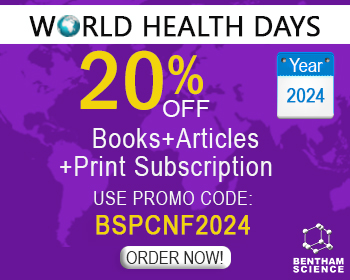Abstract
Background: Ayahuasca, a traditional Amazonian decoction with psychoactive properties, is made from bark of the Banisteriopsis caapi vine (containing beta-carboline alkaloids) and leaves of the Psychotria viridis bush (supplying the hallucinogen N,N-dimethyltryptamine, DMT). Originally used by indigenous shamans for the purposes of spirit communication, magical experiences, healing, and religious rituals across several South American countries, ayahuasca has been incorporated into folk medicine and spiritual healing, and several Brazilian churches use it routinely to foster a spiritual experience. More recently, it is being used in Europe and North America, not only for religious or healing reasons, but also for recreation.
Objective: To review ayahuasca’s behavioral effects, possible adverse effects, proposed mechanisms of action and potential clinical uses in mental illness.
Method: We searched Medline, in English, using the terms ayahuasca, dimethyltryptamine, Banisteriopsis caapi, and Psychotria viridis and reviewed the relevant publications.
Results: The following aspects of ayahuasca are summarized: Political and legal factors; acute and chronic psychological effects; electrophysiological studies and imaging; physiological effects; safety and adverse effects; pharmacology; potential psychiatric uses.
Conclusion: Many years of shamanic wisdom have indicated potential therapeutic uses for ayahuasca, and several present day studies suggest that it may be useful for treating various psychiatric disorders and addictions. The side effect profile appears to be relatively mild, but more detailed studies need to be done. Several prominent researchers believe that government regulations with regard to ayahuasca should be relaxed so that it could be provided more readily to recognized, credible researchers to conduct comprehensive clinical trials.
Keywords: Ayahuasca, hallucinogens, N, N-dimethyltryptamine (DMT), Banisteriopsis caapi, Psychotria viridis, monoamine oxidase (MAO).
[PMID: 18668010]
[http://dx.doi.org/10.1080/02791072.2009. 10399767] [PMID: 20235436]
[http://dx.doi.org/10.1016/S0378-8741(98)00168-8] [PMID: 10404423]
[http://dx.doi.org/10.1177/002076407101700402] [PMID: 5145130]
[http://dx.doi.org/10.1590/1516-4446-2015-1701] [PMID: 27111702]
[http://dx.doi.org/10.1097/00005053-199602000-00004] [PMID: 8596116]
[http://dx.doi.org/10.1016/0378-8741(96)01390-6] [PMID: 8733119]
[http://dx.doi.org/ 10.1080/02791072.2005.10399801] [PMID: 16149333]
[http://dx.doi.org/10.1080/02791072.2011.566498] [PMID: 21615005]
[http://dx.doi.org/10.1124/jpet.103.049882] [PMID: 12660312]
[PMID: 704949]
[http://dx.doi.org/10.1016/j.drugalcdep.2010.03.015] [PMID: 20570058]
[http://dx.doi.org/10.1080/02791072.2009.10400530] [PMID: 19999673]
[http://dx.doi.org/10.1016/j. annals.2010.05.005]
[http://dx.doi.org/10.1080/02791072.2005.10399803] [PMID: 16149335]
[http://dx.doi.org/ 10.1080/02791072.2005.10399802] [PMID: 16149334]
[http://dx.doi.org/10. 1016/S0379-0738(02)00162-7] [PMID: 12208022]
[http://dx.doi.org/10.1016/j. drugpo.2010.09.002] [PMID: 21051213]
[http://dx.doi.org/ 10.1007/s00204-015-1513-x] [PMID: 25877327]
[PMID: 26647632]
[http://dx.doi.org/10.1007/s10943-014-9826-2] [PMID: 24477460]
[http://dx.doi.org/10.1080/02791072.1999.10471741] [PMID: 10438001]
[http://dx.doi.org/10.1080/02791072.2008. 10400630] [PMID: 18720669]
[http://dx.doi.org/10.2174/15733998113099990003] [PMID: 23627784]
[http://dx.doi.org/ 10.1016/j.drugpo.2012.02.007] [PMID: 22459485]
[http://dx.doi.org/10.1007/s002130000606] [PMID: 11292011]
[http://dx.doi.org/10.1097/JCP.0b013e31823607f6] [PMID: 22005052]
[http://dx.doi.org/ 10.1007/s00213-011-2434-x] [PMID: 21842159]
[http://dx.doi.org/10.1007/s00213-002-1237-5] [PMID: 12474114]
[http://dx.doi.org/10.1080/02791072.1998.10399709] [PMID: 9924839]
[http://dx.doi.org/10.1001/archpsyc.1994.03950020009001] [PMID: 8297216]
[http://dx.doi.org/10.1016/S0378-8741(98)00168-8] [PMID: 10404423]
[http://dx.doi.org/10.1001/archpsyc.1987.01800180093014] [PMID: 3579504]
[http://dx.doi.org/10.1016/j.drugalcdep.2010.03.024] [PMID: 20554400]
[http://dx.doi.org/10. 1080/02791072.2012.703100] [PMID: 23061320]
[http://dx.doi.org/10.1016/j.comppsych.2016.09.003] [PMID: 27653781]
[http://dx.doi.org/10.1080/02791072.2012.703099] [PMID: 23061318]
[http://dx.doi.org/10.1007/s00213-015-4162-0] [PMID: 26612618]
[http://dx.doi.org/10.1371/journal.pone.0042421] [PMID: 22905130]
[http://dx.doi.org/10.1007/s00213-016-4377-8] [PMID: 27435062]
[http://dx.doi.org/10.1080/02791072.2013.873157] [PMID: 24830187]
[http://dx.doi.org/10.1080/02791072.2014.920117] [PMID: 25052884]
[http://dx.doi.org/10.1046/j.1365-2125.2002.01609.x] [PMID: 12047486]
[http://dx.doi.org/10.1080/02791072. 2013.763564] [PMID: 23662333]
[http://dx.doi.org/10.1159/000077946] [PMID: 15179026]
[http://dx.doi.org/ 10.1371/journal.pone.0137202] [PMID: 26421727]
[http://dx.doi.org/10.1016/S0944-7113(98)80003-2] [PMID: 23195759]
[http://dx.doi.org/10.1016/j.euroneuro. 2016.03.012] [PMID: 27039035]
[http://dx.doi.org/10.1093/ijnp/pyv039] [PMID: 25820842]
[http://dx.doi.org/10.1007/s00213-006-0358-7] [PMID: 16575552]
[http://dx.doi.org/10.1097/JCP.0000000000000436] [PMID: 26650973]
[http://dx.doi.org/10.1002/hbm. 21381] [PMID: 21922603]
[http://dx.doi.org/10.1016/j. euroneuro.2015.01.008] [PMID: 25637267]
[http://dx.doi.org/10.1371/journal.pone.0118143] [PMID: 25693169]
[http://dx.doi.org/10.4331/wjbc.v4.i4.141] [PMID: 24340137]
[http://dx.doi.org/ 10.1016/j.brainresbull.2016.03.002] [PMID: 26976063]
[http://dx.doi.org/10.1007/s00213-007-0963-0] [PMID: 18030450]
[http://dx.doi.org/10.1007/BF00421954] [PMID: 5081369]
[http://dx.doi.org/10.1016/0091-3057 (74)90116-6] [PMID: 4533618]
[http://dx.doi.org/10.1016/S0376-8716(98)00154-9] [PMID: 10372792]
[http://dx.doi.org/10.1111/j. 1360-0443.1994.tb02787.x] [PMID: 7987187]
[http://dx.doi.org/10.1097/00008877-200403000-00007] [PMID: 15096915]
[http://dx.doi.org/10.1007/BF00422642]
[PMID: 4519415]
[PMID: 1064726]
[http://dx.doi.org/10.1007/BF02245347] [PMID: 7892432]
[http://dx.doi.org/10.1001/archpsyc.1994.03950020009001] [PMID: 8297216]
[http://dx.doi.org/10.1111/j.1600-0773.1987.tb01711.x] [PMID: 3562389]
[http://dx.doi.org/10.1212/01.WNL.0000038385.60538.19] [PMID: 12499487]
[http://dx.doi.org/10.1007/s00213-013-3167-9] [PMID: 23793226]
[http://dx.doi.org/10.1192/bjp.137.3.236] [PMID: 6777009]
[http://dx.doi.org/10.1176/ajp.133.2.203] [PMID: 1062171]
[http://dx.doi.org/10.1097/WNF.0000000000000078] [PMID: 26166234]
[http://dx.doi.org/10.1177/0004867412462749] [PMID: 23047957]
[http://dx.doi.org/10. 1186/s40345-014-0020-y] [PMID: 25713771]
[http://dx.doi.org/10.1007/s00213-003-1763-9] [PMID: 14997271]
[PMID: 10381769]
[http://dx.doi.org/10. 1080/02791072.2014.960113] [PMID: 25364989]
[http://dx.doi.org/ 10.1007/s00702-013-1024-y] [PMID: 23619992]
[http://dx.doi.org/10.1371/journal.pone. 0106533] [PMID: 25171370]
[http://dx.doi.org/10.3389/fimmu.2015.00358] [PMID: 26236313]
[http://dx.doi.org/10.1159/000139317] [PMID: 7568345]
[http://dx.doi.org/10.1007/BF00429362] [PMID: 14050410]
[http://dx.doi.org/10.1007/BF00413244] [PMID: 14138757]
[http://dx.doi.org/10.1007/s002130050949] [PMID: 10353432]
[http://dx.doi.org/10.1016/j.amjcard.2003.12.057] [PMID: 15081447]
[http://dx.doi.org/10.1097/FJC.0000000000000243] [PMID: 25714595]
[http://dx.doi.org/10.1016/S0376-8716(99)00148-9] [PMID: 10940539]
[http://dx.doi.org/10.1111/j.1471-4159.2009. 06273.x] [PMID: 19619142]
[http://dx.doi.org/10. 1016/j.beproc.2015.05.004] [PMID: 26049017]
[http://dx.doi.org/10.1093/jat/29.8.838] [PMID: 16356341]
[http://dx.doi.org/10.1002/bdrb.20272] [PMID: 21136499]
[http://dx.doi.org/10.1002/bdrb.20244] [PMID: 20549682]
[http://dx.doi.org/ 10.1021/jf5005176] [PMID: 24689494]
[http://dx.doi.org/10.1002/dta.1344] [PMID: 22514127]
[http://dx.doi.org/10.1016/j.fct.2009.12.019] [PMID: 20036304]
[http://dx.doi.org/10.1002/dta.1343] [PMID: 22577086]
[http://dx.doi.org/10.1080/02791072.2005.10399796] [PMID: 16149328]
[http://dx.doi.org/10.1016/j.chroma.2009.10.088] [PMID: 19926090]
[http://dx.doi.org/10.1016/0378-8741(84) 90003-5] [PMID: 6587171]
[http://dx.doi.org/10.1016/j.jep.2010.02.013] [PMID: 20219660]
[http://dx.doi.org/10.1093/jac/dkn319] [PMID: 18694906]
[http://dx.doi.org/10.1016/j.brainresbull.2016.04.016] [PMID: 27126737]
[http://dx.doi.org/10.1126/science.175. 4028.1365] [PMID: 5059565]
[http://dx.doi.org/ 10.1126/science.1166127] [PMID: 19213917]
[http://dx.doi.org/10.1038/nature08506] [PMID: 19881490]
[http://dx.doi.org/10.1007/s00213-014-3658-3] [PMID: 24985890]
[http://dx.doi.org/10.1016/0006-3223(95)00200-6] [PMID: 8731519]
[http://dx.doi.org/10.1124/mol.60. 6.1181] [PMID: 11723224]
[http://dx.doi.org/10.1073/pnas.181356198] [PMID: 11504935]
[http://dx.doi.org/10.1177/2050312113508389] [PMID: 26770688]
[http://dx.doi.org/10.2174/1570159 X13666141210222409] [PMID: 26074742]
[http://dx.doi.org/10.1016/0014-2999(84)90275-9] [PMID: 6090167]
[http://dx.doi.org/10.1016/j.forsciint.2008.05.003] [PMID: 18603389]
[http://dx.doi.org/10.1111/j.1556-3537.2012.01056.x]
[http://dx.doi.org/10.1080/02791072. 2008.10400645] [PMID: 19004422]
[http://dx.doi.org/10.1016/j.pnpbp.2012.06.001] [PMID: 22691716]
[http://dx.doi.org/10.1016/0006-8993(90)90318-6] [PMID: 2137718]
[http://dx.doi.org/10.1042/BJ20070797] [PMID: 17850214]
[http://dx.doi.org/10.1016/S0376-8716(01)00123-5] [PMID: 11543990]
[PMID: 798093]
[http://dx.doi.org/10.1016/j.neuropharm.2010.10.016] [PMID: 21034752]
[http://dx.doi.org/10.1016/S0091-3057(03)00129-1] [PMID: 12895680]
[http://dx.doi.org/10.1177/0269881112463125] [PMID: 23076833]
[http://dx.doi.org/10.1016/S0376-8716(97)00163-4] [PMID: 9649961]
[http://dx.doi.org/10.1007/s002130100879] [PMID: 11797076]
[http://dx.doi.org/10.1111/j.1749-6632.2009.05148.x] [PMID: 20201860]
[http://dx.doi.org/10.1016/j.abb.2010.12.024] [PMID: 21185805]
[http://dx.doi.org/10.1111/j.1742-4658.2009.07346.x] [PMID: 19796173]
[http://dx.doi.org/10.1371/journal.pone.0019264] [PMID: 21573099]
[http://dx.doi.org/10.4161/oxim.3.5.13109] [PMID: 21150338]
[http://dx.doi.org/10.1080/02791072.2005.10399797] [PMID: 16149329]
[http://dx.doi.org/10.1124/jpet.102.047050] [PMID: 12649384]
[http://dx.doi.org/10.1016/j.foodchem. 2012.03.024] [PMID: 23107733]
[http://dx.doi.org/10.1177/0269881113513852] [PMID: 24284475]
[http://dx.doi.org/10.1111/j.1360-0443.2004.00744.x] [PMID: 15139867]
[http://dx.doi.org/10.1080/02791072.2015.1013202] [PMID: 25950593]
[http://dx.doi.org/10. 1113/jphysiol.1955.sp005242] [PMID: 14354632]
[http://dx.doi.org/10.1002/dta.1685] [PMID: 25069786]
[http://dx.doi.org/10.1080/02791072.1998.10399712] [PMID: 9924842]
[http://dx.doi.org/10.1002/ptr.3458] [PMID: 21433154]
[http://dx.doi.org/10.1080/02791072.2012. 704590] [PMID: 23061319]
[http://dx.doi.org/10. 1080/02791072.2005.10399794] [PMID: 16149326]
[http://dx.doi.org/10.1016/S0024-3205(03)00647-7] [PMID: 12941438]
[http://dx.doi.org/10.1016/j.ejphar.2005.06.023] [PMID: 16061219]
[http://dx.doi.org/10.1590/1516-4446-2014-1496] [PMID: 25806551]
[http://dx.doi.org/10.1177/2045125316638008] [PMID: 27354908]
[http://dx.doi.org/10.1016/j. jep.2007.04.012] [PMID: 17532158]
[http://dx.doi.org/10. 1016/j.euroneuro.2005.08.005] [PMID: 16183262]
[http://dx.doi.org/10.1016/j.pnpbp.2009.07.021] [PMID: 19632287]
[http://dx.doi.org/10.1007/s00702-010-0451-2] [PMID: 20686906]
[http://dx.doi.org/10.1016/j.brainresbull. 2009.09.008] [PMID: 19772900]
[http://dx.doi.org/10.1016/j.jep.2009.10.030] [PMID: 19879939]
[PMID: 11504830]
[http://dx.doi.org/10.1016/j.euroneuro.2007.02.007] [PMID: 17376658]
[http://dx.doi.org/10.1016/S0006-3223(00) 00892-1] [PMID: 11074229]
[http://dx.doi.org/10.1007/s00213-003-1392-3] [PMID: 12652345]
[http://dx.doi.org/10.1196/annals.1304. 049] [PMID: 15028614]
[http://dx.doi.org/10.1111/j.1749-6632.1999.tb09388.x] [PMID: 10415944]
[http://dx.doi.org/10.4161/oxim.2.2.7944] [PMID: 20357926]
[http://dx.doi.org/10.1016/j.mehy.2004.11.005]
[http://dx.doi.org/10.1007/s40263-013-0059-9] [PMID: 23653088]
[http://dx.doi.org/10.1016/j.jep.2007.04.012] [PMID: 17532158]
[http://dx.doi.org/10.1016/0091-3057(95)02135-3] [PMID: 8728550]
[http://dx.doi.org/10.1080/02791072.1998.10399709] [PMID: 9924839]
[http://dx.doi.org/10.1038/nrn3530] [PMID: 23756634]
[http://dx.doi.org/10.1177/0269881116652578] [PMID: 27287824]





























